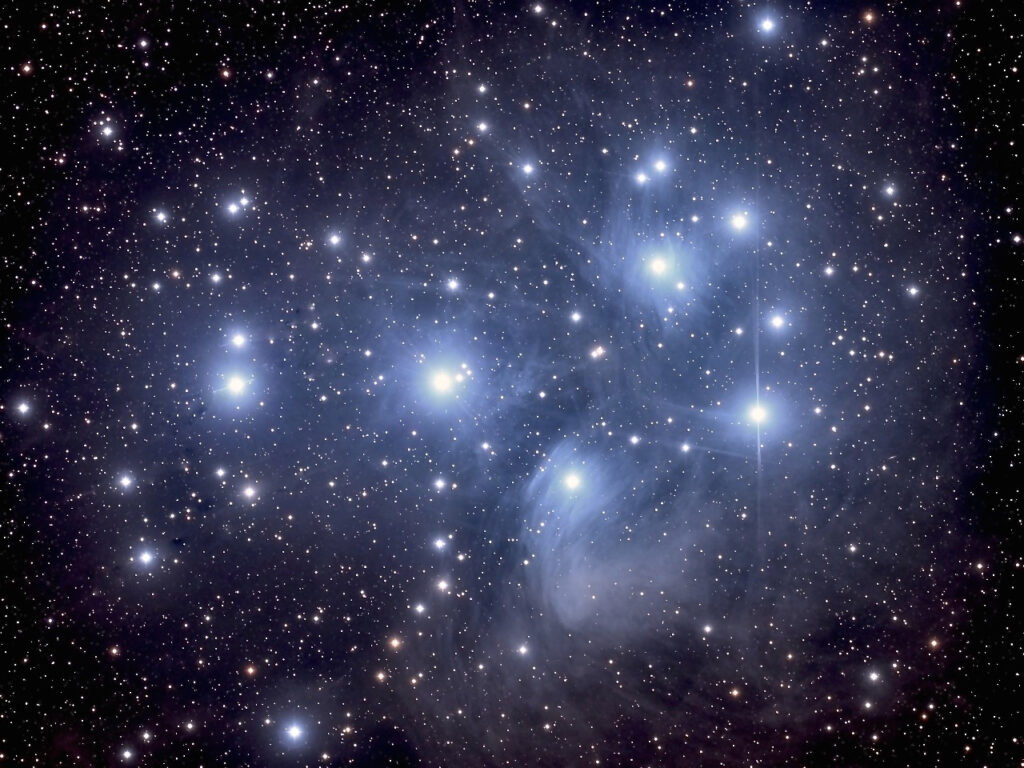Reminiscent of Van Gogh's "Starry Night" is this 10-hour image of a nearby star cluster commonly known as the Pleiades, or "Seven Sisters." While the etymology of the name “Pleiades” is unclear, and probably derives from the mother (Pleione) of the “seven divine sisters” in Greek mythology. The nine brightest stars are known commonly by the names of the seven sisters (Alcyone, Electra, Maia, Merope, Taygete, Celaeno, and Sterope) and their parents, Pleione and Atlas.
The cluster contains more than 1,000 confirmed member stars, at a distance of 450 light years, making it one of the closest star clusters to Earth. The bright, blue stars are stellar class “B,” meaning that they are blue giant stars emitting prodigious amounts of radiant energy. The cluster also contains several substellar brown dwarf stars, that are too small to ignite sustained nuclear fusion reactions.
The cluster is prominent in the Fall and Winter sky as a small fuzzy area that resolves into 6-10 stars upon closer examination. The Pleiades is a spectacular cluster in binoculars or a low power telescope. The blue nebulosity surrounding the stars is a "reflection nebula." This kind of nebula is caused by light from one or more background stars passing through a cloud of dust along our line of sight. The light is reflected or "scattered" by microscopic dust particles.
The Pleiades is mentioned by countless writers throughout history, and has been called various names by different cultures. It is mentioned three times in the Bible:
Job 9:9: "He is the Maker of the Bear and Orion, the Pleiades and the constellations of the south."
Job 38:31-33: "Can you bind the beautiful Pleiades?"
Amos 5:8: "He who made the Pleiades and Orion, who turns blackness into dawn and darkens day into night, who calls for the waters of the sea and pours them out over the face of the land-the LORD is his name."
The Pleiades Star Cluster
Date Taken:January 2016
Location Taken:Rowe, NM
Conditions of Location: Equipment Used:Takahashi FSQ106 apochromatic refractor, and QSI 683WSG camera
Processing Used:16x10 minute subs, in luminance, red, green, and blue, for a total exposure of 10 hours
Distance from Location:450 light years
Constellation:Taurus
Other Link:
